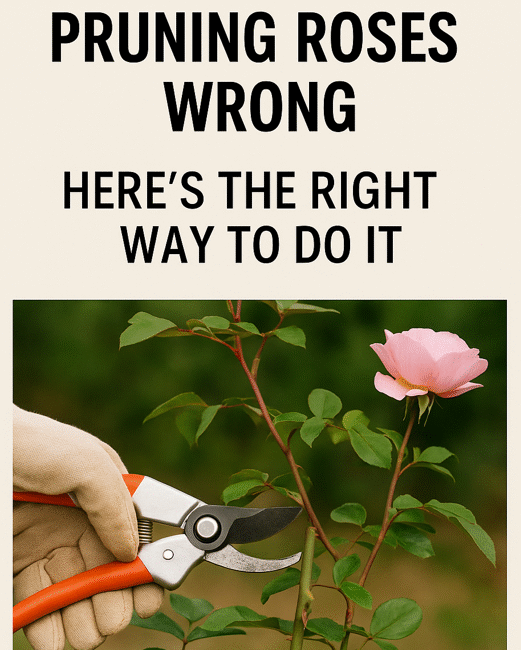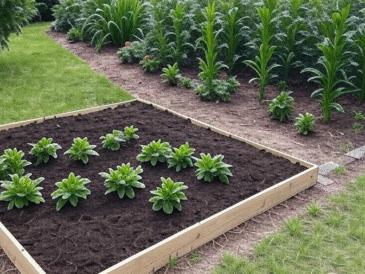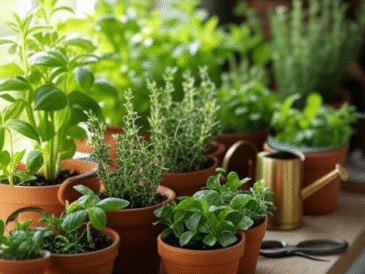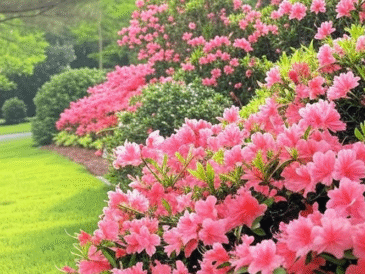There’s something magical about a blooming rose bush. The vibrant colors, the sweet fragrance it’s no wonder roses have earned a place in so many home gardens. But here’s the kicker: most people unknowingly harm their roses with poor pruning habits. I know because I used to be one of them.
If your rose bushes are looking tired, underwhelming, or just not blooming like they should, chances are it’s not the plant—it’s how it’s being pruned. In this post, we’ll explore the right way to prune rose bushes so you get lush blooms and healthy plants year after year. Trust me, once you get the hang of it, pruning becomes a rewarding ritual rather than a guessing game.
Why Pruning Your Roses the Right Way Matters
Pruning isn’t just about keeping your roses tidy—it’s a vital step in helping them thrive. Think of it like a reset button that removes the old and unhealthy parts so the plant can focus on fresh, vigorous growth.
When you prune properly, you:
- Remove dead or diseased branches
- Improve air circulation (which means less fungus)
- Encourage more blooms
- Shape the bush to allow sunlight to hit every part
From my own experience, I used to avoid pruning because I was afraid of “hurting” the plant. But once I started following the correct techniques, the difference was incredible. I had more blooms, fewer pests, and happier plants overall.
The Top Pruning Mistakes Gardeners Make
Before diving into the how-to, let’s talk about the don’ts. Here are a few common mistakes that can sabotage your roses:
❌ Pruning at the Wrong Time
Timing is everything. Pruning too early can expose fresh cuts to frost, while pruning too late may delay blooming.
❌ Cutting Too Much (or Too Little)
Over-pruning stresses the plant. Under-pruning leads to overcrowding and poor air flow.
❌ Using Dull Tools
Always use sharp, clean shears. Jagged cuts invite disease.
❌ Not Cleaning Between Cuts
Skipping tool sanitation can spread disease from one bush to another. A quick dip in rubbing alcohol between cuts can save your whole garden.
When Is the Best Time to Prune Roses?
Generally, the sweet spot for pruning is late winter to early spring, just as new buds start to swell. For many areas in the U.S. and Canada, that’s around March.
- In warmer climates (like Southern California or Florida), prune in late January or early February
- In colder regions (like the UK or Northern states), wait until the last frost has passed
🌿 Pro Tip: For climbing roses, prune after the first major bloom, typically in late spring or early summer.
Must-Have Tools for the Job
Here’s a quick checklist of tools I always keep on hand:
- Bypass pruning shears (for clean cuts)
- Loppers (for thicker canes)
- Pruning saw (for heavy-duty jobs)
- Thorn-proof gloves
- Disinfectant spray or rubbing alcohol (for sanitizing between cuts)
Investing in good tools makes a world of difference. I still remember when I switched from cheap garden scissors to a real pair of shears—it felt like slicing butter with a hot knife.
How to Spot Dead or Diseased Wood
Learning to recognize unhealthy growth is key. Dead wood feels dry and brittle, and when you scratch it, the inside is brown. Healthy wood, in contrast, is green and moist just beneath the surface.
Watch for:
- Black spots
- White powder (powdery mildew)
- Sunken or discolored canes
Cut these parts out completely and dispose of them—don’t compost diseased clippings!
The Right Way to Make Your Cuts
When making cuts:
- Cut at a 45° angle, sloping away from an outward-facing bud.
- Leave about 1/4 inch above the bud—not too close, not too far.
- Remove crossing branches and anything growing toward the center.
The goal? Create an open, vase-like structure that allows air and sunlight to flow freely through the plant.
Shaping the Rose Bush for Beauty and Health
Imagine your rose bush as a circle. You want about 4–6 evenly spaced canes coming out from the center like spokes on a wheel. This spacing helps:
- Maximize light exposure
- Reduce disease risk
- Encourage symmetrical growth
I prune my roses back by one-third in early spring, then adjust again lightly after blooming to keep the shape tidy.
Viral Pruning Hacks: What Works and What Doesn’t?
Social media is full of hacks, but not all of them are helpful. Here’s the scoop:
- ✅ Cinnamon: Mildly antifungal, okay to dust on cuts—but not a miracle cure.
- ❌ Vinegar for weeds: Works, but it can kill roses if sprayed too close.
- ❌ Coffee grounds: Overuse can alter soil pH—use sparingly and always compost first.
Stick with tried-and-true gardening wisdom, and test new hacks on a small section first.
Post-Pruning Rose Care
Your job’s not done after pruning! Here’s how to support your roses afterward:
- Fertilize with a balanced or rose-specific feed
- Water deeply, especially during dry spells
- Mulch to retain moisture and suppress weeds
- Monitor for pests or disease weekly
I always take 15 minutes every Saturday morning to inspect my rose beds—it’s my peaceful garden ritual, and it helps me catch issues early.
Want More Blooms? Do This
If you’re dreaming of a rose bush bursting with color, here’s what to prioritize:
- Deadhead spent blooms regularly
- Use a slow-release fertilizer every 6 weeks during growing season
- Ensure 6+ hours of sunlight daily
- Avoid overwatering, which leads to root rot
With consistent care, you’ll be amazed at how prolific your roses can become.
Final Thoughts: Pruning Roses Isn’t Scary It’s Empowering
Pruning your rose bushes the right way isn’t about being perfect—it’s about giving your plants what they need to thrive. Once you understand the basics, it becomes an enjoyable part of your garden care routine.
If I can do it and believe me, I used to be terrified of cutting anything in my garden so can you. Your roses will reward you with healthier growth, fewer pests, and blooms that stop neighbors in their tracks.
So grab your gloves, sharpen those shears, and get pruning!




